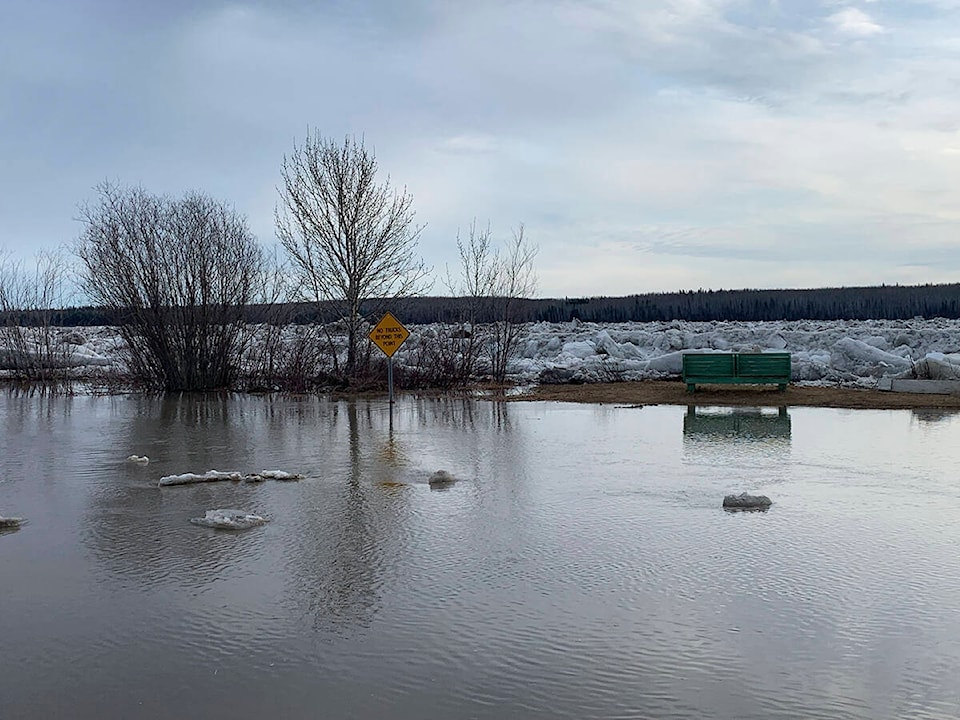On June 7 2021, Randy Sibbeston filed a motion with the Village of Fort Simpson proposing they investigate a former gravesite upon which two schools now sit.
“Initially, the village had passed a resolution of support for the Liidlii Kue First Nation to investigate the history of the graves through research and ground penetrating radar, etc., using federal money that had been recently announced,” wrote Sean Whelly, mayor of Fort Simpson, to NNSL in an email.
Sibbeston claims that almost a year on, nothing has been done.
“They’re lollygagging around the issue,” said Sibbeston. “Kids are playing on their ancestors’ graves. Something needs to be done.”
According to media reports, the gravesites in Fort Simpson have been common knowledge for decades.
“People are accepting of it. Some people are OK with it — it’s just the way things are done but I’m not,” said Sibbeston.
In his motion, Sibbeston supplied a letter from 1965 that outlined a local priest’s concerns about moving the gravesite.
The letter stated there were 402 bodies buried in Roman Catholic cemetery from 1915 to 1957 in lot 17, which measures approximately 46 by 76 metres.
It’s now the site of Líídlįį Kúę Regional High School and Líídlįį Kúę Elementary School.
“Your department had at first considered moving the cemetery. But when they learned that there were so many bodies to be moved, they got frightened by the idea, and also considered that it would be really too expensive,” wrote Father Henri Posset.
Posset later committed suicide following an investigation into allegations of child sexual assault.
“There are no plans for excavation,” Fort Simpson Mayor Sean Whelly stated last week. “The village does support any Liidlii Kue First Nation attempt to help identify gravesites and bring more clarity to the whole issue of the gravesite and its history.”
Sibbeston noted building over a cemetery poses serious legal consequences. According to the Canadian Criminal Code, desecration of one grave can carry up to five years of imprisonment.
“The responsibility for seeking a legal opinion regarding village liability regarding grave sites at or around the LaPointe Hall fell on the village, as it was a village resolution to consult with a lawyer on the matter. The council approved the motion, moved by Mr. Randy Sibbeston.”
“There was a legal opinion sought to determine if some liability exists with the Village of Fort Simpson. That was a resolution brought forth by Mr. Sibbeston. I do not know if that was actually received. The dates of course predate the establishment of the current village government,” wrote Whelly.
“I think it is not about escaping liability, I think it is about supporting the search for truth and that was a very important aspect of Mr. Sibbeston’s motion.
“The village wants to support the First Nation to give rest to many unanswered questions that seem to linger unresolved around this burial site.”
Sibbeston is no longer a village councillor, having lost his seat in last fall’s municipal election.
Sibbeston said urgent action must be taken, describing the site as not only a moral issue but a public health concern.
“When it rains, the gravesites soak up and then expel contaminated water,” he said.
As a child, he said he played at the sites in question, and as a result, got very sick.
“Something must be done to protect our children,” he said. “They’re running around in a graveyard.”
